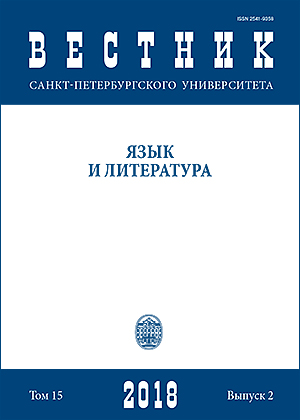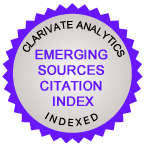Linguocultural modelling of the basic concept in journalism texts in polycode systems
DOI:
https://doi.org/10.21638/11701/spbu09.2018.209Abstract
The article deals with the language reality that is significantly influenced by the artificial factors — the latest multimedia systems. Although they had never been included in the anthropogenesis, they nevertheless began to influence the methodology of modelling the subject world by a person through a system of the text imperatives. The article therefore considers the system of the polycode texts, their linguocultural, social and humanitarian aspects. The analysis allows to conclude that the sphere of linguistic consciousness and the mechanisms of identification of linguistic reality particularly react to the transformations: artificial factors that were never previously included in the anthropogenesis system began to exert a significant influence on the methodology of modelling the objective world by an individual. With the development of the information theory, the intensity of the use of complex semiotic systems has sharply increased, the language of computer programming has become a reality. It has led to the virtualization of linguistic consciousness and formation of a conceptual apparatus with a modernized content. The study concludes that today we can state that the system of recording semiotic material and its presentation has radically changed. The text material is reproduced on the different platforms, broadcast by completely different codes in which there is a dialectical contradiction and even a potential mutual rejection of the heterogeneous semiotic systems that are seemingly insurmountable. In practice, such polycode systems, having a powerful multimedia potential, are already active, primarily in the form of longreads, and it is important to manage how they function in such a way that they effectively fulfill their humanitarian mission. To this end, it is necessary to study their technological characteristics, textual content parameters, monitor their impact on the recipient environment, and consider them in a wide linguocultural, social and civilizational aspects.
Keywords:
polycode text, concept, entropy, journalism, multimedia systems, linguocultural modelling
Downloads
References
Литература
Text sources
Dictionaries and guids
References
Downloads
Published
How to Cite
Issue
Section
License
Articles of "Vestnik of Saint Petersburg University. Language and Literature" are open access distributed under the terms of the License Agreement with Saint Petersburg State University, which permits to the authors unrestricted distribution and self-archiving free of charge.






